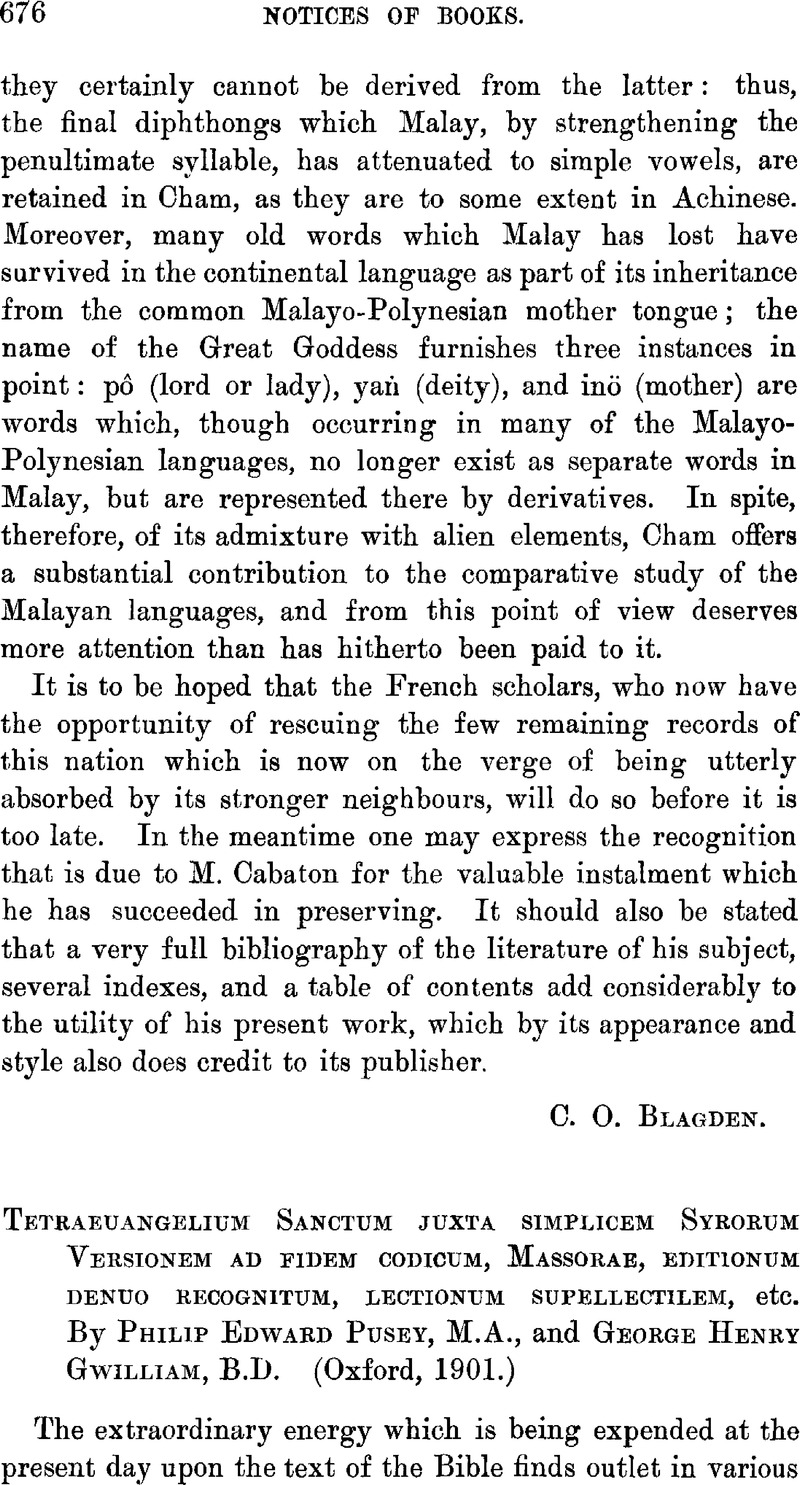No CrossRef data available.
Published online by Cambridge University Press: 15 March 2011

page 677 note 1 The earliest dated MSS. belong to the middle of the sixth century.
page 678 note 1 Professor Rendel Harris, from an examination of two fifth-century MSS. not included in Mr. Gwilliam's list, comes to the same conclusion as regards the fixed state of the text; see bis article in the London Quarterly Review, January, 1902.
page 679 note 1 The date of the establishment of the Peshitta text has recently been ascribed with great probability to the time of Rabbūlā, Bishop of Edessa (411–435 a.d.). Mr. F. C. fiurkitt, to whom this is due, has proved conclusively that the terminus a quo must be subsequent to the Syrian father Ephrem (died 373). The terminus ad quem is probably barely a century later. (See Burkitt, , “St. Ephraim's Quotations from the Gospels,” Text and Studies, 1901, vii, 2Google Scholar.)